Jonathan Elmer
Perils of Label Indeterminacy: A Case Study on Prediction of Neurological Recovery After Cardiac Arrest
Apr 05, 2025



Abstract:The design of AI systems to assist human decision-making typically requires the availability of labels to train and evaluate supervised models. Frequently, however, these labels are unknown, and different ways of estimating them involve unverifiable assumptions or arbitrary choices. In this work, we introduce the concept of label indeterminacy and derive important implications in high-stakes AI-assisted decision-making. We present an empirical study in a healthcare context, focusing specifically on predicting the recovery of comatose patients after resuscitation from cardiac arrest. Our study shows that label indeterminacy can result in models that perform similarly when evaluated on patients with known labels, but vary drastically in their predictions for patients where labels are unknown. After demonstrating crucial ethical implications of label indeterminacy in this high-stakes context, we discuss takeaways for evaluation, reporting, and design.
Neurological Prognostication of Post-Cardiac-Arrest Coma Patients Using EEG Data: A Dynamic Survival Analysis Framework with Competing Risks
Aug 17, 2023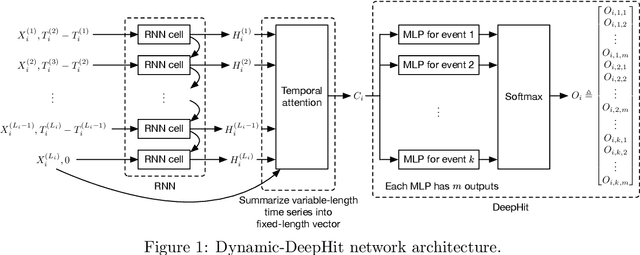
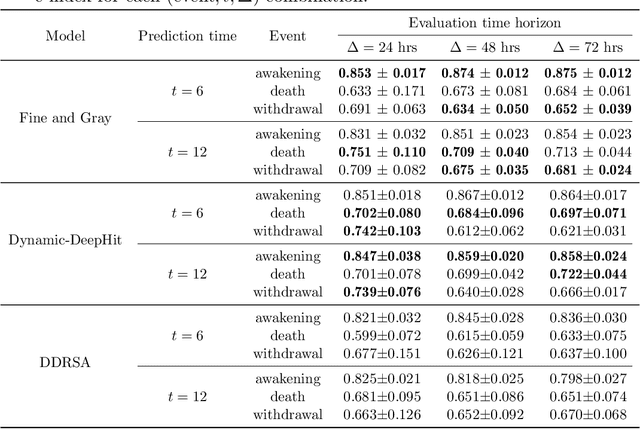
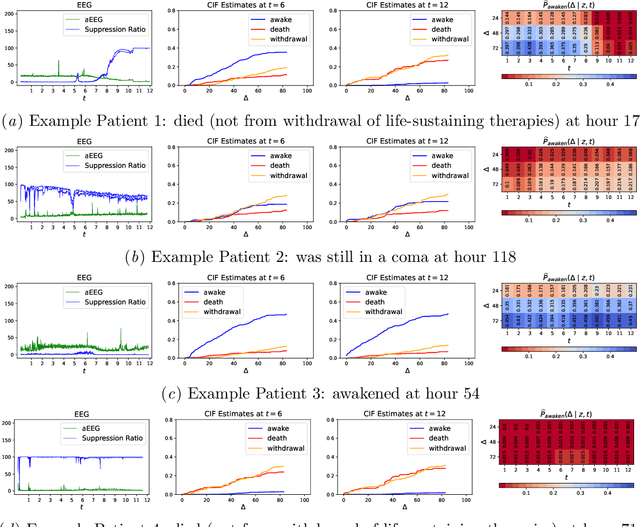

Abstract:Patients resuscitated from cardiac arrest who enter a coma are at high risk of death. Forecasting neurological outcomes of these patients (the task of neurological prognostication) could help with treatment decisions. In this paper, we propose, to the best of our knowledge, the first dynamic framework for neurological prognostication of post-cardiac-arrest comatose patients using EEG data: our framework makes predictions for a patient over time as more EEG data become available, and different training patients' available EEG time series could vary in length. Predictions are phrased in terms of either time-to-event outcomes (time-to-awakening or time-to-death) or as the patient's probability of awakening or of dying across multiple time horizons. Our framework uses any dynamic survival analysis model that supports competing risks in the form of estimating patient-level cumulative incidence functions. We consider three competing risks as to what happens first to a patient: awakening, being withdrawn from life-sustaining therapies (and thus deterministically dying), or dying (by other causes). We demonstrate our framework by benchmarking three existing dynamic survival analysis models that support competing risks on a real dataset of 922 patients. Our main experimental findings are that: (1) the classical Fine and Gray model which only uses a patient's static features and summary statistics from the patient's latest hour's worth of EEG data is highly competitive, achieving accuracy scores as high as the recently developed Dynamic-DeepHit model that uses substantially more of the patient's EEG data; and (2) in an ablation study, we show that our choice of modeling three competing risks results in a model that is at least as accurate while learning more information than simpler models (using two competing risks or a standard survival analysis setup with no competing risks).
Benefit-aware Early Prediction of Health Outcomes on Multivariate EEG Time Series
Nov 11, 2021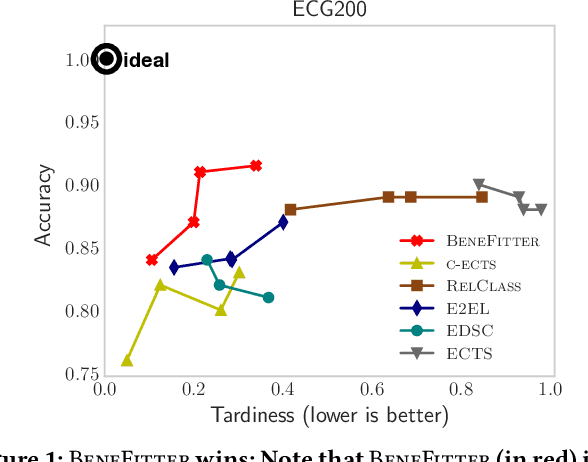
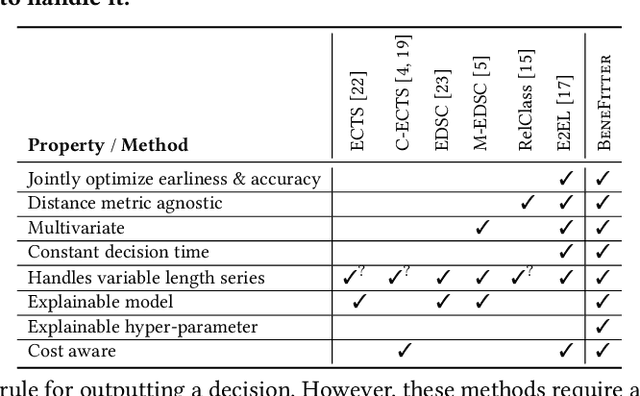
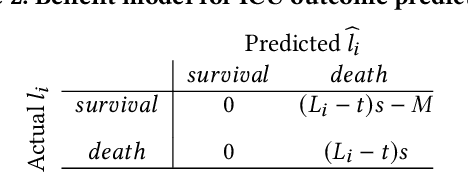
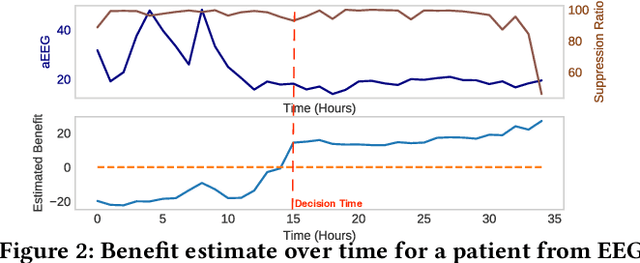
Abstract:Given a cardiac-arrest patient being monitored in the ICU (intensive care unit) for brain activity, how can we predict their health outcomes as early as possible? Early decision-making is critical in many applications, e.g. monitoring patients may assist in early intervention and improved care. On the other hand, early prediction on EEG data poses several challenges: (i) earliness-accuracy trade-off; observing more data often increases accuracy but sacrifices earliness, (ii) large-scale (for training) and streaming (online decision-making) data processing, and (iii) multi-variate (due to multiple electrodes) and multi-length (due to varying length of stay of patients) time series. Motivated by this real-world application, we present BeneFitter that infuses the incurred savings from an early prediction as well as the cost from misclassification into a unified domain-specific target called benefit. Unifying these two quantities allows us to directly estimate a single target (i.e. benefit), and importantly, dictates exactly when to output a prediction: when benefit estimate becomes positive. BeneFitter (a) is efficient and fast, with training time linear in the number of input sequences, and can operate in real-time for decision-making, (b) can handle multi-variate and variable-length time-series, suitable for patient data, and (c) is effective, providing up to 2x time-savings with equal or better accuracy as compared to competitors.
 Add to Chrome
Add to Chrome Add to Firefox
Add to Firefox Add to Edge
Add to Edge